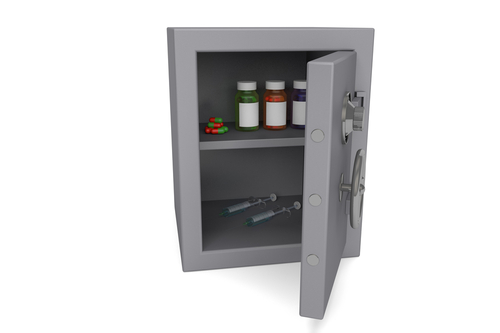PAH Combination Therapy Lowers Hospitalization Rate & Worsening PAH in New study

 The results from the randomized controlled AMBITION study to determine the efficacy of treating patients with Pulmonary Arterial Hypertension (PAH) with a combination of ambrisentan/tadalafil, when compared to ambrisenan or taladafil as monotherapies, were presented at this year’s European Respiratory Society (ERS) International Congress.
The results from the randomized controlled AMBITION study to determine the efficacy of treating patients with Pulmonary Arterial Hypertension (PAH) with a combination of ambrisentan/tadalafil, when compared to ambrisenan or taladafil as monotherapies, were presented at this year’s European Respiratory Society (ERS) International Congress.
Combination therapies are a form of therapy that uses more than one drug. The major benefit is that by combining different drugs it prevents the development of drug resistance, a major concern with monotherapies.
The study was conducted by Nazzareno Galié, MD and colleagues at the Department of Experimental, Diagnostic and Specialty Medicine at the University of Bologna, Italy. For the AMBITION study, patients were administered a combination therapy of ambrisentan/tadalafil over the course of 78.6 weeks, ambrisentan monotherapy over the course of 66.6 weeks, or tadalafil monotherapy over the course of 71.6 weeks. The study’s primary endpoint was clinical failure demonstrated either by hospitalization due to worsening PAH, disease progression, or unsatisfactory long-term clinical response.
[adrotate group=”4″]
The authors observed that combination therapy reduced the risk for reaching the primary endpoint when compared to the pooled montherapy results (ambrisentan and tadalafil), but also when compared to each monotherapy individually, either ambrisentan and tadalafil. With hospitalizations being the most common endpoint, they found that combination therapy of ambrisentan/tadalafil delayed the first hospitalization by 63%.
The adverse effects observed throughout the study were observed with the same incidence and severity in all tested groups; however, in the combination therapy, peripheral edema, headache, nasal congestion and anemia were the most frequent adverse side-effects.
[adrotate group=”3″]
Lewis J. Rubin, MD, emeritus professor at the University of California, San Diego commented in a press release, “The AMBITION results potentially establish a new treatment paradigm in PAH.”
Currently, combination therapy is not approved for treating patients with PAH, and so Dr. Galié, the study’s lead author, noted they will submit AMBITION results to FDA New Drug Application until the end of the year. Ambrisentan mode of action is to block endothelia receptors while tadalafil inhibits phosphodiesterase type 5 inhibitor (PDE5) and is usually prescribed to PAH patients to improve their exercise capacity.







